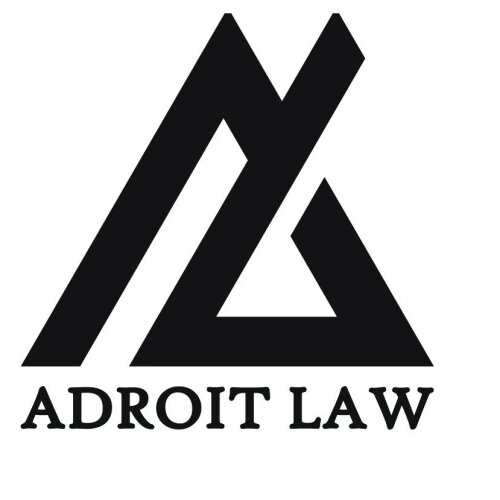Adoption, by law, has the effect of transferring all the parental rights and responsibilities to the adoptive parents and terminating the parental rights and responsibilities of the birth parents.
The High Court of Kenya, a pivotal institution in the adoption process, holds the authority to issue an adoption order in response to an application filed by an individual or two spouses. The proceedings are held in chambers to maintain confidentiality.
Prerequisites for Adoption
Before proceeding with adoption arrangements, it is essential to ensure that the child has been declared available for adoption and has reached the age of six weeks.
It is also important that the adoptive applicant does not preselect a specific child for adoption. Any child residing in Kenya, regardless of citizenship or birthplace, is eligible for adoption. Children who are orphans, have no available caregiver, have been abandoned, or have been willingly offered up for adoption are all eligible for adoption.
Required Documentation
The adoption process begins with the filing of an adoption application at the court registry, followed by the scheduling of a hearing date. The applicant(s) must provide various documents about the child and themselves. These may include the child's birth certificate, school progress report, children's officer report, and the death certificate of the child's biological parents if they are deceased. The applicants must also provide their financial statements, medical reports, birth certificates of their other children (if any), and a marriage certificate if applying as a couple.
The application must include written consent from a parent or guardian of the child, the consent of the other spouse, or, in the case of a child who is ten years or older, the child's consent. Once the Court reviews the application, it may grant or deny an adoption order. If an adoption order is granted, all rights, duties, obligations, and liabilities relating to the child are transferred to the applicants as if the child were their biological child.
Types of Adoption Under the Children’s Act 2022
Kinship adoption
Kinship adoption is permitted under Section 193 of the Children's Act. It refers to adoption by relatives within the child's extended family. This type of adoption can only be made in favour of a relative of the child. The Court may issue an order, imposing terms as it sees fit. Consent is required from every person involved, as outlined in general adoption guidelines. In the case of a parent, they must understand that the adoption order permanently deprives them of their parental rights.
Local Adoption
The concept of local adoption, as provided for in the Children's Act 2022, applies when the child in question is a resident of Kenya and the adopting parent or parents are Kenyan nationals also resident in Kenya. In this case, the Court will consider these circumstances before making an adoption order using contextual analysis.
Foreign adoption
Foreign adoption points to adoption under various circumstances that a court of law will consider. These circumstances include instances such as when:
(a) The adoptive parent or parents are Kenyan nationals with dual citizenship.
(b) The adoptive parent or parents are foreign nationals, whether or not they are residents of Kenya.
(c) The adoptive parent or parents are not Kenyan nationals but are biologically related to the child.
(d) The adopting parent or parents were once Kenyan nationals but have lost their nationality by operation of the host country's law to which the prospective parent or parents have a nationality.
In the circumstances above, the general procedure for adoption will follow.
The Process of Adoption in Kenya
The process of adoption in Kenya is highlighted through the following stages:
Stage 1: Orientation meeting/Agency Stage
At this stage, an adult visits the adoption society and inquires about adoption. Once done, should they wish to proceed with the adoption, they will be required to fill out application forms.
Stage 2: The Home Visit
A children's officer visits the applicant's home to determine whether the applicant (potential adoptive parent) can meet the child's needs. The children's officer also checks whether the environment is secure and explores the applicant's motivation and reasons for wanting to adopt.
Stage 3: The Matching, Placement, and Bonding
At this stage, arrangements are made for the introduction and bonding of the child in question and the potential adoptive parents. If bonding is successful, the child is released to the care of the potential adoptive parents.
Stage 4: The Court Stage
At this stage, a court of law analyses the case and finalizes the adoption matter. Before finalizing the matter, the Court examines each case individually. It may rely on the opinion of a social worker or a children's officer.
The Pros and Cons of Adoption
Pros
Adopting a child allows one to financially support the child and provide them with a proper education, ensuring a better future. It also gives the child love and a sense of family and community. Raising a child can be a deeply fulfilling experience.
Cons
Raising a child involves significant financial responsibilities, especially when it comes to adoption. It's essential to consider the needs of the adopted child and balance them with your own, which can be challenging.
During an adoption hearing, anyone with consent can withdraw it at any time, with or without the Court's permission. A key player's denial of consent can negatively impact the adoption process.
Additionally, biological parents have the right to apply to the Court to review the Adoption Order if they believe it is in the best interest of the child. If the Court finds their evidence satisfactory, the Court can revoke the adoption order.
Disclaimer
The information provided in this article is for informational purposes only and does not constitute legal advice. Readers should seek legal counsel before engaging in any transactions or activities. Additionally, the content of this article does not establish an advocate-client relationship between any reader and any individuals or entities associated with the publication.






